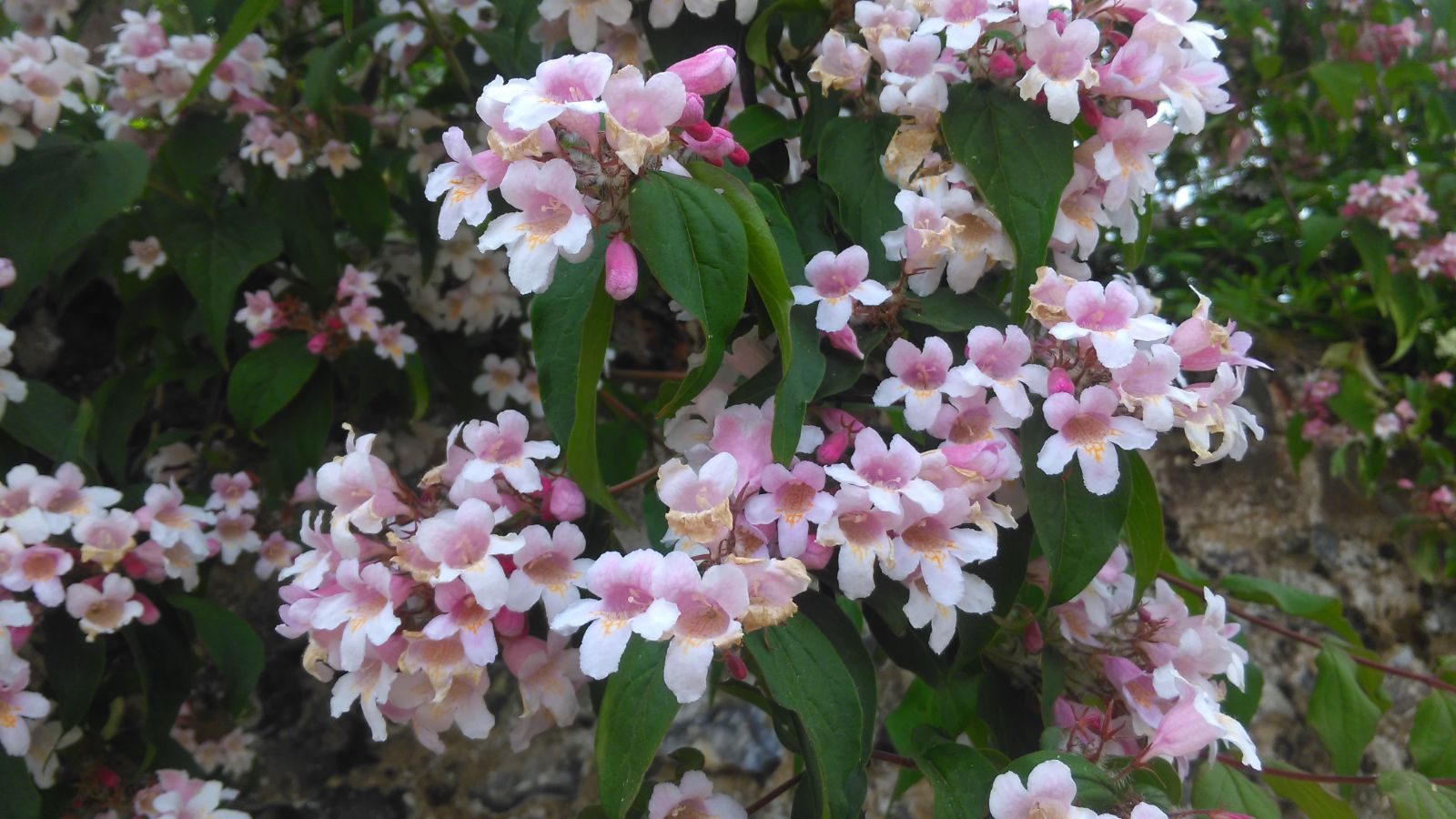Kolkwitzia
Sponsor
Kindly sponsored by
The Normanby Charitable Trust
Credits
Terry Huang (2019)
Recommended citation
Huang, T. (2019), 'Kolkwitzia' from the website Trees and Shrubs Online (treesandshrubsonline.
Family
- Caprifoliaceae
Common Names
- Beautybush
Deciduous shrub to 3 m tall and nearly as wide; multi-stemmed with dense, twiggy habit maturing to a vase-shape silhouette. Branchlets densely pubescent when young, smooth and light brown when mature; bark peeling in large, thin sheets. Leaves dull blue-green, opposite in two-rank arrangement, broadly ovate with rounded base and tip, 2.5–8.5 cm long and 1.5–5.5 cm wide, sparse dentation, lightly pubescent on blade and densely so on veins and margin; petioles 1–2 mm long; stipules absent. Inflorescence in panicles with short peduncles 10–15 mm long. Flowers hermaphroditic, usually paired in terminal clusters; pedicles pubescent; sepals 5, narrow, pubescent, persistent; corolla funnel-shaped, 1.5–2.5 cm long, petal lobes 5 with bilateral symmetry, pink to white hue with yellow veining heaviest on lower three lobes, unscented; stamens 4; ovary inferior, hirsute with 3 locules, though only 1 is fertile. Fruits ovoid capsules, bristly, contain only one seed. Flowering in May–June; fruiting August–September (China) (Graebner 1901; Bean 1981a; Krüssmann 1984; Cullen et al. 2011; ; Dirr 2011; Armitage et al. 2014; Flora of China 2018).
Kolkwitzia is a monotypic genus in the Caprifoliaceae consisting of one species, Kolkwitzia amabilis. In 1901 German botanist, K.O.R.P.P. Graebner, based his description of the new genus using a specimen collected by the Missionary P.G. Giraldi in 1895. Graebner named the genus in honor of his friend Dr. R. Kolkwitz of Berlin (Pampanini 1911).
Kolkwitzia is a small to medium-sized deciduous shrub naturally occurring in central to eastern China on scrubby mountain slopes and waysides. Plants are typically bushy to vase-shaped with dull, blue-green, opposite leaves, and are covered in pale pink flowers in spring. Flowers are campanulate and weakly bi-labiate with two lobes above and three larger below sporting yellow reticulate venation. Flowers are typically paired and produced terminally on branchlets, and once fertilised develop into bristly capsules with persistent sepals. The sepals do not, however, enlarge in fruit as they do in Abelia (Bean 1981a).
Kolkwitzia’s close affinities with the genus Abelia, and other taxa in the tribe Linnaeeae, continue to create disagreement amongst taxonomists. Phylogenetic research of Caprifoliaceae and sister families throughout the 2000s has reorganised the taxonomy of this large clade. Though Abelia was found to be polyphyletic, results indicated that Abelia s.l., Dipelta, Kolkwitzia, and Linnaea form a single monophyletic group in Linnaeeae. Christenhusz (Christenhusz 2013) suggested sinking the genera Abelia, Dipelta, and Kolkwitzia into Linnaea as an alternative to recognising six monophyletic genera suggested by Landrein and Prenner (Christenhusz 2013). Rather than sink several genera that are each familiar and important in horticulture, we have opted to retain them in Trees and Shrubs Online, although this approach has ramifications for our forthcoming treatment of Abelia: see the Linnaea article for a more detailed discussion.

